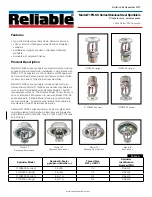
xNAV quick start guide
Page 1/4
Version: 140626
110202
xNAV quick start guide
Version:
140623
Author:
BG
List of contents
1. Installing an xNAV .......................................................................................................................... 1
2. Positioning the antennas ................................................................................................................... 2
3. Configuring an xNAV ...................................................................................................................... 2
4. LED states ........................................................................................................................................ 3
5. Initialisation and warming up .......................................................................................................... 3
6. Downloading and viewing data........................................................................................................ 3
7. Revision history ............................................................................................................................... 4
This quick start guide covers the basics of installing and operating an xNAV system. More detailed
information can be found in the full user manual.
1.
Installing an xNAV
When mounting an xNAV, it is important to ensure there can be no movement relative to the body
being measured, as this will affect the accuracy of your measurements. The xNAV can be secured
using the M3 mounting holes on the side of the body and the pre-formed 90° brackets that are
supplied with each system. Brackets allowing an xNAV to be attached to an RT-Strut for use in
road vehicles is also available as an optional extra.
The standard orientation of the measurement axes are shown in Figure 1. This orientation is
common to all models of xNAV, and is marked on top of the xNAV along with the origin of the
inertial measurement unit (IMU). By default the xNAV expects its
y
-axis to point right and the
z
-
axis to point down, although it can be mounted in any orientation as long as this is defined using the
NAVconfig configuration software.
During configuration, remember that measurements should be made to the IMU origin indicated on
the lid, not to any other point on the system. The xNAV will automatically re-orientate its output
measurements using information provided during the configuration process.
It is not vital to precisely align the xNAV’s axes to the
body being measured as the system is capable of
automatically resolving many of these. However, to
quickly achieve the best results, you
should
aim to align
them as closely as possible.
A dc power supply between 10–31 V and capable of
delivering 7 W will be required. Power is delivered via
the main connector. This connector is keyed and should
not be forced in. Rotate the connector until it inserts
easily. When inserted properly the connector locks to
Figure 1. Orientation of xNAV axes






















